Lire cet article en Français ![]()
SAP BusinessObjects BI 4.3:
The Inside Scoop
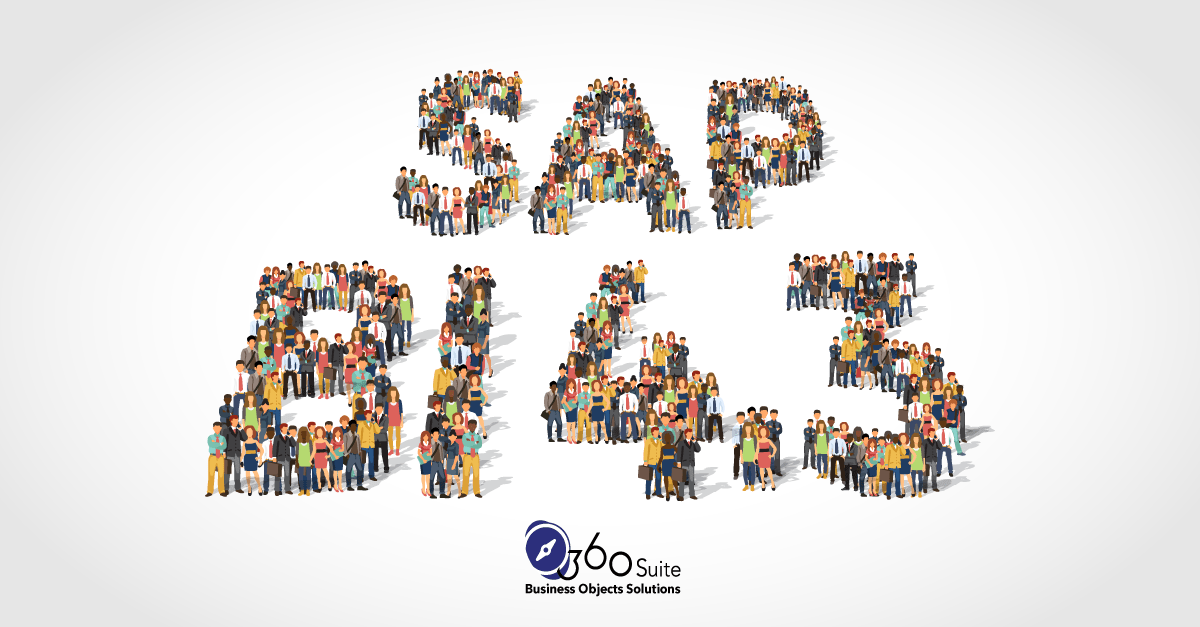


We shattered 360Suite records when more than 1,100 people around the world registered for our April 23 webinar: Discover SAP BusinessObjects BI 4.3. Hosted by 360Suite’s own Pauline Lancaster and Nathan Crook, the webinar featured guest speaker Gregory Botticchio, Director of Product Management for SAP BusinessObjects Web Intelligence.
Gregory immediately assured the audience that SAP will continue to invest in its on-premise BI suite. SAP BusinessObjects BI 4.3, which includes innovation to both SAP BusinessObjects and Web Intelligence (WebI), is the proof. As for the timeline, BI 4.3 will reach the general availability (GA) stage in the second quarter of 2020. For customers already on BI 4.2, transitioning to BI 4.3 will be straightforward and take the form of an update, not a migration. SAP will continue to provide support and deliver innovation in the form of service packs to BI 4.3 through 2026 at a minimum, and won’t rule out the possibility of releasing another version of its popular BI platform in the future.


Gregory outlined the three key ways in which the newest version of the SAP BI platform is better than ever before:
- A new hybrid structure
- A better user experience
- Enhanced enterprise readiness


New Hybrid Structure
Improved SAP Analytics Cloud Live Universe Connectivity
SAP BusinessObjects BI 4.3 will feature tighter integration between BusinessObjects BI and SAP Analytics Cloud.
Although SAP Analytics Cloud can already access and consume existing Universes — both relational UNV and UNX — BI 4.3 will make improvements to Live Universe Connector 3.0, including:
- Enhanced performance when using SAP Analytics Cloud on top of Universes without moving on-prem data to the cloud
- The ability to apply data level security
- Better support of SAP Analytics Cloud capabilities, such as powerful queries and visualizations created using business terms, regardless of the data source
Simplified SSO Configuration and User Management
Another aspect of the SAP BusinessObjects BI 4.3 hybrid structure is the SAP BusinessObjects Web Intelligence Data Model, which makes it possible to consume Web Intelligence data in SAP Analytics Cloud and reuse existing Web Intelligence documents to build new information.
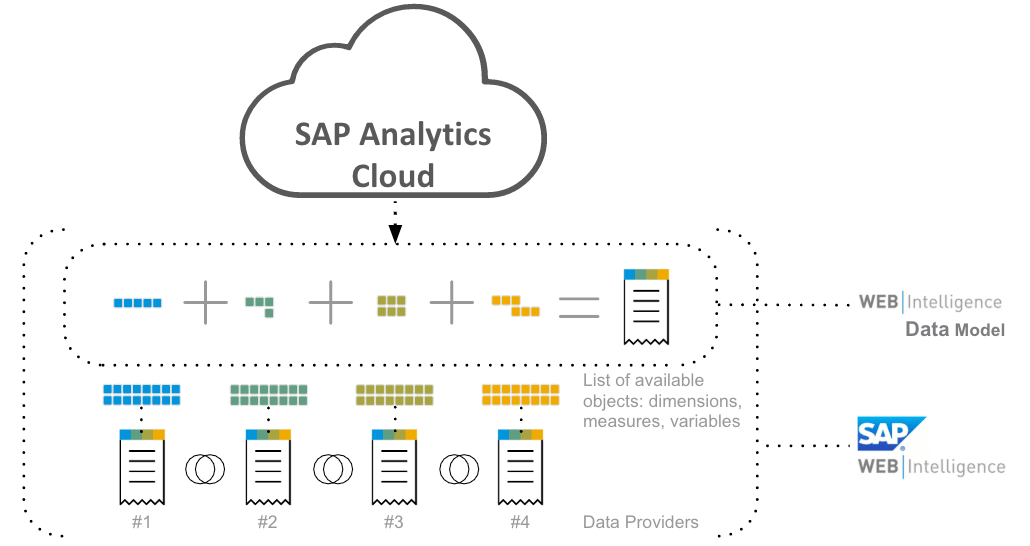


The SAP BusinessObjects BI 4.3 hybrid structure also features hybrid user management — a way to deliver System for Cross-domain Identity Management (SCIM) APIs. This makes it easy to onboard existing on-prem users to the cloud, by user or by group. It also allows the SAP Identify Provisioning Service to provision and synchronize BI platform users to SAP Analytics Cloud, and enable SAP Analytics Cloud users to access on-premise data.
Improved Integration with SAP Analytics Hub
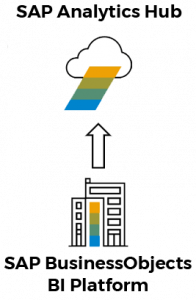

Finally, the SAP BusinessObjects BI 4.3 hybrid structure includes greater SAP Analytics Hub interoperability. With hub integration, end users can identify and select SAP BusinessObjects BI content to be pushed from the SAP BusinessObjects BI platform to SAP Analytics Hub automatically. SAP Analytics Hub sets up the basic information for the asset and points to the correct on-premise artifact, eliminating the need for end users to recreate it from scratch in SAP Analytics Hub.


Better User Experience
New “Fiori-like” BI Launchpad
At the heart of a better user experience is the new BI launchpad. The Fiori-like launchpad is fully compatible with existing BI content and authorizations, and offers functional parity with numerous advantages over the existing BI launchpad, including:
- Updated workspace with a modern look and feel
- Scheduling and publication enhancements
Behind the scenes, the new launchpad is exactly the same as the BI 4.2 SP07 classic launchpad HTML in terms of services, sizing, folder structure, and security.
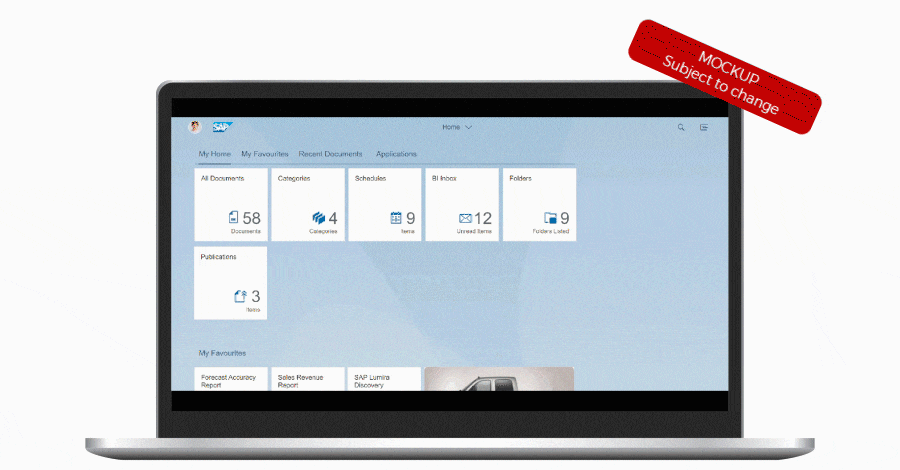


One New HTML5 Web Intelligence Designer
Inside the SAP BusinessObjects BI 4.3 launchpad is a single HTML5-based Web Intelligence interface for all types of users (viewer ad designer), which is available via desktop (new WebI Rich Client in 64bits) or from the web. The Web Intelligence clients are consistent with the new Web Intelligence Interactive Viewer, offer full parity with the Web Intelligence Java Applet and Web Intelligence Rich Client 4.2 SP07, and are “touch ready.” Best of all, the new Web Intelligence clients make it easy to switch between modes: reading mode, design mode (featuring non-contextual actions and a list of available objects), and structure mode (featuring all objects needed to feed a table).
Specific improvements include:
- A light menu bar (no double ribbon)
- A new formatting panel that provides immediate results to contextual formatting actions
- A new build (feeding) panel that offers a “trial” experience when authoring or analyzing reports
- New contextual widgets in addition to right-click
User Interface (UI) improvements made to the BI 4.3 Web Intelligence unlock end-user autonomy and self-service reporting.
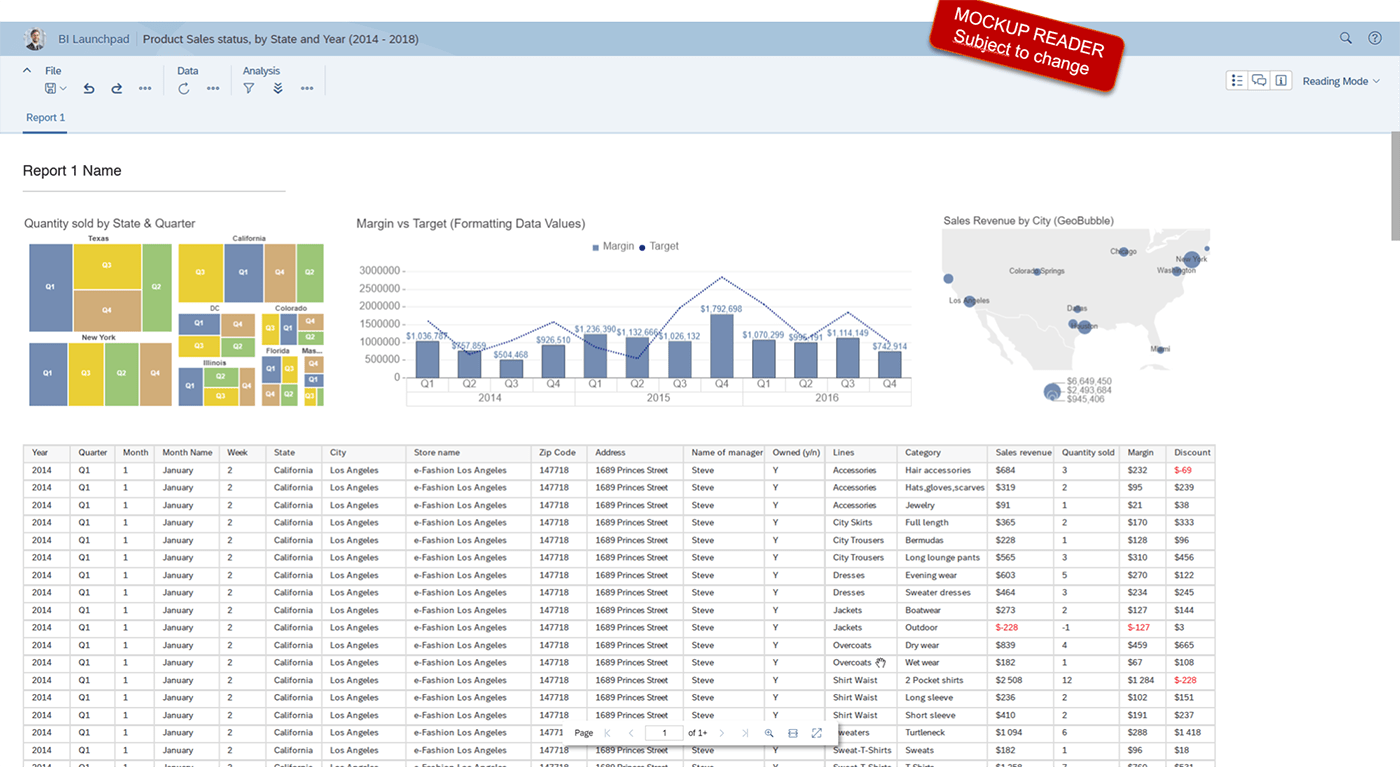


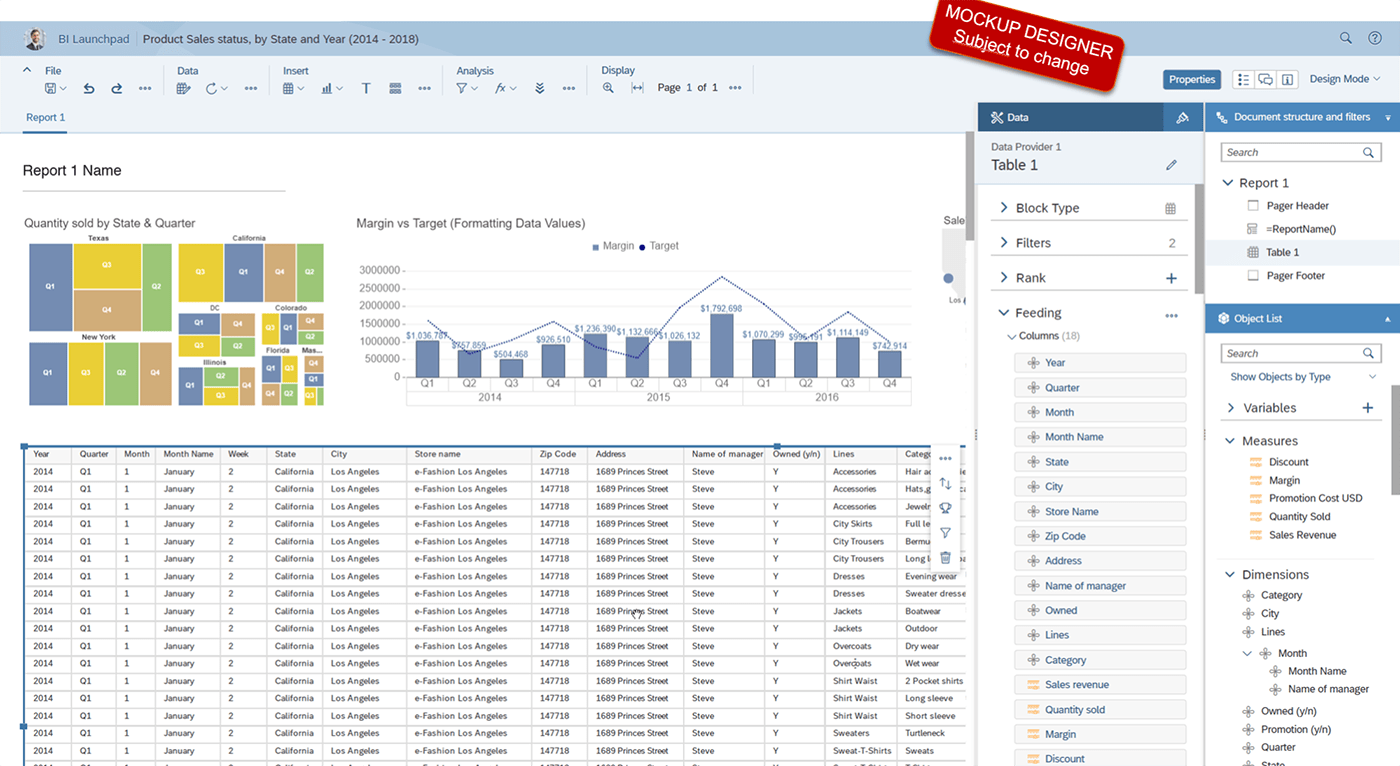


New Web Intelligence Data Model
With regard to the new Web Intelligence Data Model, the BI 4.3 version makes it easy to:
- Use SAP Analytics Cloud to query Web Intelligence Data Models that remain on premise
- Export Web Intelligence Data Models as web services that are available to be accessed, or consumed by third-party apps (like Q/DaaWS)
- Create new Web Intelligence documents by using Web Intelligence Data Models, enabling self-service report creation for end-users who don’t have to create queries any longer
Customer Enhancements to Key BI Suite Components
When it comes to Web Intelligence reports, BI 4.3 represents an attempt by SAP to simplify report creation and consumption. Recognizing that business users comprise 85% of people who interact with Web Intelligence reports, SAP has reintroduced an “Interactive Analysis” mode, which falls on the spectrum between “interactive” and “designer” modes. Interactive analysis mode makes it possible to define the scope of capabilities, which in turn makes it possible to create different categories of users — from power users with unlimited access, to classic end users, who can design their own reports without creating queries.
Other outcomes of continuous improvement include new chart types and capabilities, such as micro-charts in table cells, trend lines, trellis charts, and zoom and pan.
With regard to SAP BI Mobile, the integration of the new Web Intelligence HTML5 viewer into this App will provide a responsive interface so users can consume every Web Intelligence document from any connected device, anywhere.
BI 4.3 improvements also extend to Crystal reports with CR4E repository items, 64-bit for client and server, support for Japan era name transitions, leveraging of BI platform updates, support for platforms and data sources, and Fiori-like BI launchpad publications.


Enhanced Enterprise Readiness
To make BusinessObjects more enterprise ready, BI 4.3 includes improvements in the following categories:
- Installation and Deployment: Improvements to the install process, enhancements to silent install, and a tool to support cache removal
- Security: Enhancements like support for SAML 3.0, simplified SAML configuration and setup, and better credential mapping to support multiple combinations
- Administrator Tools: Updates to the BI admin cockpit, monitoring, promotion management, and more
- Audits: Improved functionality to better track user updates, such as login failures and authentication
- Scheduling and Publications: Enhanced functionality
- Security and Product Standards: Compliance with the highest standards, including updated components to address vulnerabilities or other concerns
- Data Sources: New versions of data sources, applications, and OS support (e.g., Snowflake, Google BigQuery)
- IaaS: Simplified deployment with enhancements to support bulk updates, track settings, and more.
Change is the Only Constant
There are many reasons that people and organizations resist change. They may not want to invest money in an upgrade/migration or invest time to master a new platform. Or they may wonder why they should fix something that isn’t broken. But the reality is that all good things must come to an end. Take, for example, Adobe Flash. Because Adobe will stop supporting and distributing its flash player at the end of 2020, SAP cannot incorporate BusinessObjects elements that depend on Flash — Dashboards and Explorer — into BI 4.3. More information is available by logging in to the SAP ONE support launchpad:
- KBA 2739919: Dashboards will not be included in BI 4.3 (Recommended replacement: SAP Lumira Designer)
- KBA 2729987: BI widgets will not be included in BI 4.3.
- KBA 2679783: Explorer will sunset by the end of 2020. (Recommended replacement: SAP Analytics Cloud)
Existing installations may continue to work after December 31, 2020, but will no longer be supported by SAP.
Head in the (SAP Analytics) Cloud
The key improvements incorporated in SAP BusinessObjects BI 4.3 can be linked to two stated SAP goals: 1) simplifying its analytics portfolio, and 2) focusing on SAP Analytics Cloud as SAP’s primary data discovery solution, one that gives customers the ability to discover, analyze, plan, predict, and collaborate by integrating on-premise and cloud-based data sources and applications.
The better user experience and enhanced enterprise readiness offered by BI 4.3 is an expression of the first goal. The new hybrid structure is an expression of the second goal. As an aside, another way that SAP is promoting SAP Analytics Cloud is through its Cloud Extension Policy, which allows customers to replace on-premise licenses and maintenance with public cloud or private managed cloud subscriptions.
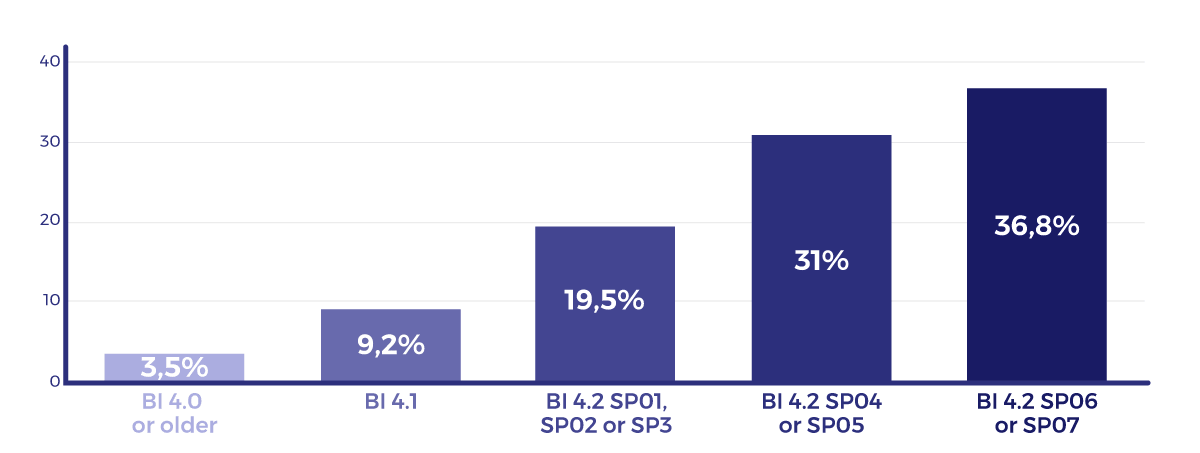


How familiar are you with SAP Analytics Cloud?
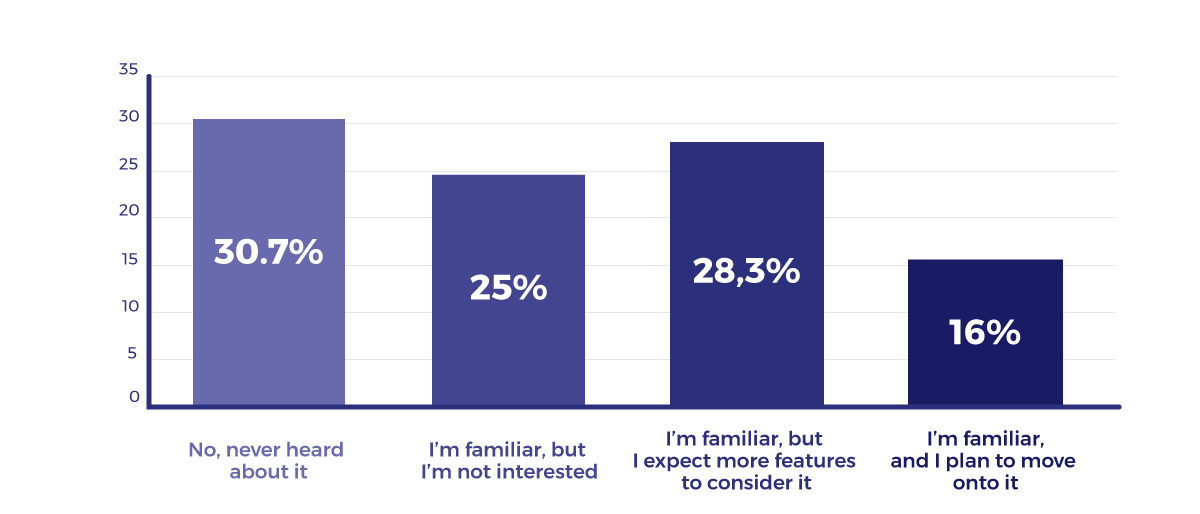


Beside SAP BusinessObjects, are you using other analytics solution(s)?
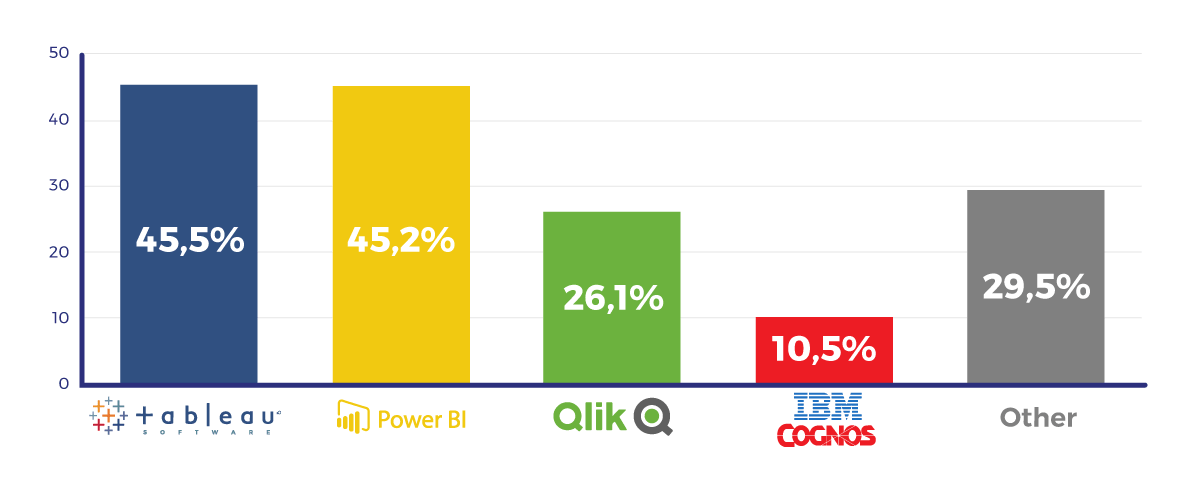


BI 4.3 represents SAP’s continued commitment to on-premise business intelligence. For customers already on BI 4.2, it’s simply an upgrade that facilitates a hybrid structure, provides a better user experience, and enhances enterprise readiness. SAP BusinessObjects customers who plan to move to SAP Analytics Cloud, in whole or in part, have a lot to gain from BI 4.3. Even customers who are committed to remaining on-premise will find that BI 4.3 is a big step in the right direction.
So Many Questions
Participants had many questions, and Gregory graciously answered them for 30 additional minutes. Here are the highlights (edited for clarity):
1. What’s the general availability (GA) release date for BI 4.3?
BI 4.3 GA is planned for mid 2020.
2. How do the system requirements differ between BI 4.3 and BI 4.2 SP7?
With regards to both the end user and backend, the system requirements for BI 4.3 are not significantly different than for BI 4.2 SP7.
3. What can we do to prepare to upgrade to BI 4.3?
SAP will communicate about the BI 4.3 upgrade process in September 2019. Stay tuned!
4. With regard to BI 4.2, will SAP release additional service packs (e.g., SP8, SP9, SP10)?
Yes, but they won’t include new innovation. All new innovation is being incorporated in BI 4.3 now.
5. Should we upgrade to BI 4.2 SPX in preparation for BI 4.3?
Or should we hold out for BI 4.3, understanding that it will be more significant upgrade from our current version.
You may want to upgrade to BI 4.2 SP07 patch 2 now, and upgrade again to BI 4.3 SP1 next year.
Learn more about the different Upgrade Strategies:
In-Place vs Side-by-Side
6. Will SAP support BI 4.3 beyond 2026?
The maintenance period for BI 4.3 will continue until at least 2026, and SAP won’t rule out the possibility of delivering another version of its BI platform.
7. If my organization upgrades to BI 4.3, will we be able to access our existing Xcelsius dashboards until we replace them with Webi or Lumira?
No, you won’t be able to open .swif files with BI 4.3.
8. What are the main changes to the CMC included in BI 4.3?
BI 4.3 does not include any changes to the CMC.
9. I miss being able to add trend lines to charts. Will this feature be available in BI 4.3?
Yes, BI 4.3 will reintroduce the option to add trend lines to charts.
10. Will BI 4.3 continue to support the UNV Universe format?
Yes, BI 4.3 will support both UNV and UNX file formats.
11. Will BI 4.3 support Crystal reports?
Yes.
12. Will BI 4.3 support HANA hierarchies?
Yes, BI 4.3 will support both HANA and BEx hierarchies.
13. Will we be able to use the Web Intelligence Data Model on premise as well?
Yes!
14. Can we use our existing BI 4.2 security model with BI 4.3, without making changes?
Yes! For BI 4.2 users, BI 4.3 is simply an update.
15. We customized our existing BI launch pad. Will we be able to customize the new launch pad in BI 4.3?
Yes! In fact, the new interface will allow you to get your hands on every area of the BI 4.3 launchpad and customize it as you wish. However, BI 4.2 launch pad customizations will not transition over.
16. The new look and feel of BI 4.3 is very similar to SAP Analytics Cloud? Is it the same thing?
No. The look is similar because of the Fiori-like launchpad, but the two products have different characteristics and workflows. That said, once you get used to BI 4.3 WebI designer mode, it’s an easy transition to SAP Analytics Cloud.
17. Will the classic BI launchpad be available in BI 4.3?
No, only the new Fiori-like launchpad will be available in BI 4.3.
18. Will we be able to create and edit WebI reports with the BI 4.3 Fiori-like launchpad?
Yes. Only the interface is new. All your existing Web Intelligence documents will open as is into the new interface!
19. How will end users drag and drop objects into a report in BI 4.3 Webi designer mode? Will they need to go into the full designer mode?
Drag-and-drop will be available to end users in both the full designer and interactive analysis modes.
20. Is it possible to restrict BI 4.3 users from entering design mode?
Yes!
21. In terms of viewing Webi reports, can we expect similar or better performance with BI 4.3 than with BI 4.2?
The experience should be the same or better. BI 4.3 boosts the loading of Webi documents at opening and interaction.
22. Is it possible to secure/update/refresh a Web Intelligence Data Model? Is it possible to merge data from a Web Intelligence Data Model with additional Universe queries?
Yes to all!
23. Does Webi Rich Client still exist in BI 4.3?
Yes, it will be a brand new WebI Rich Client in 64 bits.
24. Will the Information Design Tool (IDT) be included in BI 4.3?
Yes, BI 4.3 will include 64-bit versions of both the IDT and Universe Design Tool (UDT).
25. Will BI 4.3 include inner and/or outer join capabilities when merging data from two providers or two queries?
Yes, but not for the GA release. SAP plans to deliver inner/outer join in one of the first few service packs.
26. In BI 4.3, will Webi be able to connect directly to a data lake (e.g., Apache Hadoop Hive)?
Yes, in BI 4.3, you will be able to connect WebI directly to a data lake by using a Universe. You may also be able to use the FHSQL dialogue box to write HiveQL, but SAP hasn’t tested this approach.
27. Will we be able to consume Webi documents as sources within BI 4.3 on premise?
Yes.
28. Will BI 4.3 include any enhancements to the CMS, such as being able to export information to Excel?
No. The CMS capability of BI 4.3 will be exactly the same as for BI 4.2 SP7.
29. Does BI 4.3 include improvements in geo locations and chart integration with Google Maps?
No, but it’s possible to use visual extensions to leverage Google Maps. There are some wiki on the web that explain how to achieve this. Also, a couple of SAP partners have plugins for Google maps within Web Intelligence reports (e.g., GALIGEO, CENTIGON).
30. Some of our users prefer Power BI for their visualization dashboarding requirements, and build reports by themselves. But they’re forced to download Web Intelligence report data to feed the new reports. Will this be easier with BI 4.3?
We hope so! BI 4.3 is easy to use and Web Intelligence is great for “lite” dashboarding.
31. Will BI 4.3 include new connectors?
Currently, the connection server isn’t public, but we are going to make it public in BI 4.3 so customers can build their own application program interfaces (APIs). SAP will also deliver some samples.
32. Will BI 4.3 support the integration of SAP BusinessObjects with SAP NetWeaver?
Yes, SAP NetWeaver integration is a planned feature of BI 4.3.
33. How soon can we expect SAP BusinessObjects to include a Snowflake connector?
BI 4.3 will include a Snowflake connector.
34. Some people argue that SAP is not doing enough to compete with Power BI and Tableau.
Those people may want to take a closer look at SAP Analytics Cloud. It features great enhancements. BI 4.3 also introduces great innovations.
35. Is SAP planning to release SAP Universe connections for Power BI and Tableau?
Definitely not.


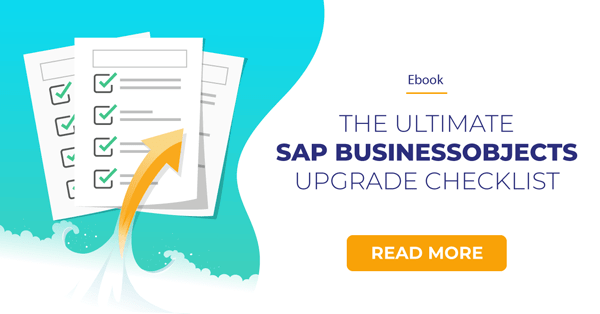

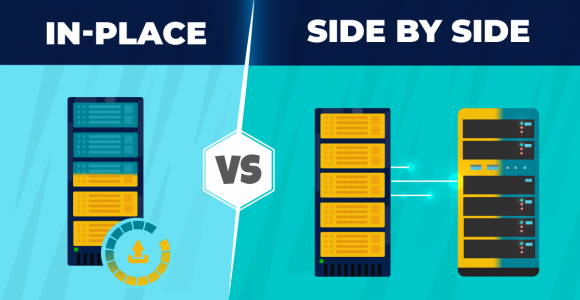
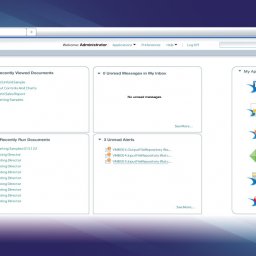
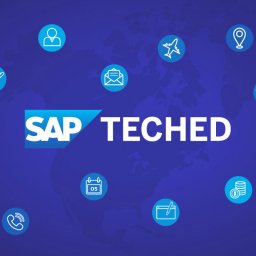
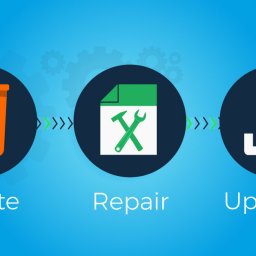
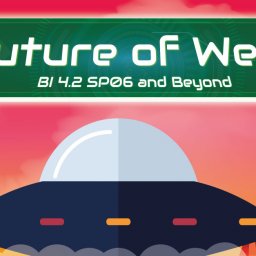
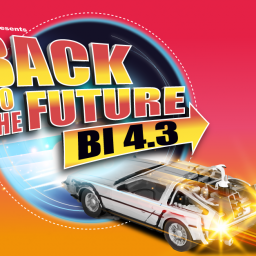
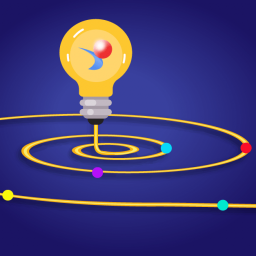
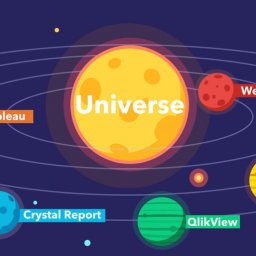
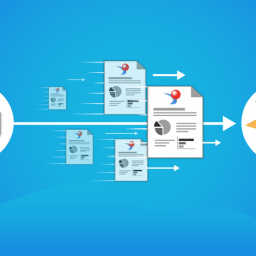
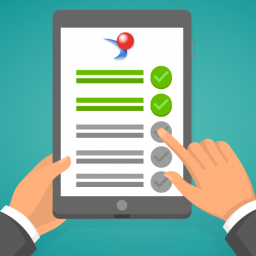
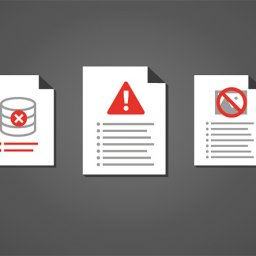
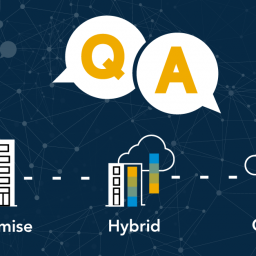
IN BI 4.3 , Is there any new data-sources added into IDT like can I create Universe with GBQ tables (without help of SIMBA drivers)
Hi,
Google BigQuery has been added to SAP BI 4.3 for IDT indeed.
See this blog for lots of details regarding this release: https://blogs.sap.com/2020/06/13/sap-businessobjects-bi-4.3-sap-bi-4.3-released/
The SAP BOBJ PAM states that the following middleware is supported: Google BigQuery 1.82.0 (google-cloud-bigquery-1.82.0.jar)
Hope this helps!
Where can I find more info about the BigQuery connector in 4.3?
Hello Eric,
I suggest you have a look a the following documents:
1. SAP PAM: https://support.sap.com/content/dam/launchpad/en_us/pam/pam-essentials/SBOP_BI_43.pdf
2. SAP BOBJ Data Access Guide: Click Here
3. SAP BI 4.3 Released: https://blogs.sap.com/2020/06/13/sap-businessobjects-bi-4.3-sap-bi-4.3-released/
4. There will be more on: https://support.sap.com/en/index.html
I’ll be personally trying this in the next few weeks. It’s nice to see support for more vendors like Google and Snowflake!
Hi,
Have few curiosity in my mind and i guess hope i get my answer from you. Below are my mentioned points.
1. As most of the corporate are using IDT for designing of Universe then why in SAP BO 4.3 SAP have kept UDT.
2. Does SAP have added any feature in 4.3 Version for document number like that of page number.
3. Does SAP have any feature, where we can able to remove blank pages between the document, if data is not available while exporting or during publishing.
Hi Vikram,
I do not work for SAP but my thoughts on your questions:
1. I don’t agree with most companies are now on IDT. New projects will be built on IDT for sure but as there are no reasons to convert UNV to UNX, I know for a fact that there are still millions of UNV out there!
2. What’s New in SAP BI 4.3 Web Intelligence:
– https://blogs.sap.com/2020/06/13/sap-businessobjects-bi-4.3-sap-bi-4.3-released/
– https://blogs.sap.com/2020/06/15/sap-bi-4.3-whats-new-in-web-intelligence-and-semantic-layer/
3. There are some options for this yes but maybe not for all cases and nothing new in SAP BI 4.3. I suggest you post this one on SAP SCN: https://accounts.sap.com/saml2/idp/sso